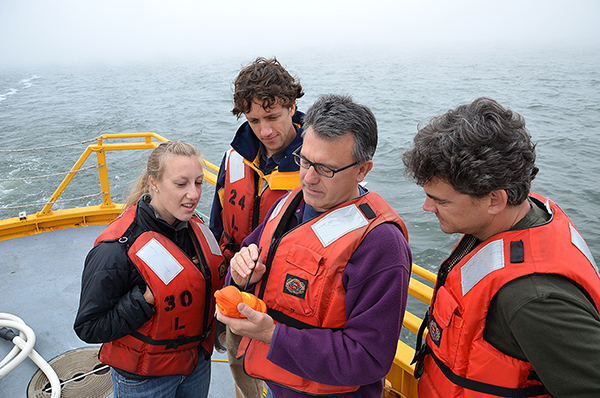You are here
Lateral Bay Survey

(Jim Lerczak, center, goes over a new piece of equipment with the team.)
It was just another typical day in the Columbia River estuary. Typical in the sense that a heavy marine layer had visibility down to almost nothing. Yet the activities going on in the estuary were quite unique.
I joined up with a collaborative team of CMOP scientists - led by Jim Lerczak, Oregon State University, Fred Prahl, Oregon State University, and Joe Needoba, Oregon Health & Science University - to document them studying the biogeochemical exchange between lateral bays and the estuary. It was a cold, foggy morning when the team embarked on their second day of research between the Cathlamet Bay and the Columbia River channel.
The team was fast and effecient as they took hourly CTD readings that included conductivity, temperature, pressure, dissolved oxygen, chlorophyll fluorescence, turbidity, CDOM, and phycoerythrin fluorescence. They also collected water samples at two depths (surface and near bottom) and filtered them in a make shift lab setup in the bottom of the ship. The samples will be analyzed later for concentrations of nutrients, methane, dissolved Mn/Fe, and CDOM.
Their research efforts will assist them in understanding how lateral bays play a role role in environmental "hotspots" in the estuary and if they are linked to increasing acidification and hypoxic events in the estuary.
Around noon, I was left off on a nearby dock. As the team sailed off to continue their work, I watched the fog lift and the sun come out over the bay - a good sign that things were looking bright for their research.



